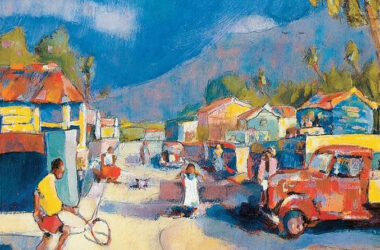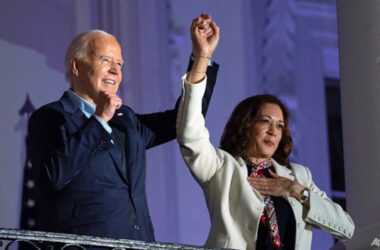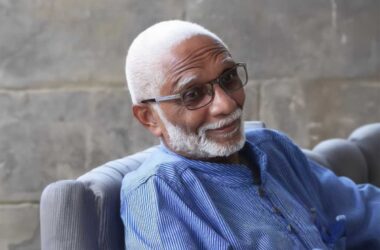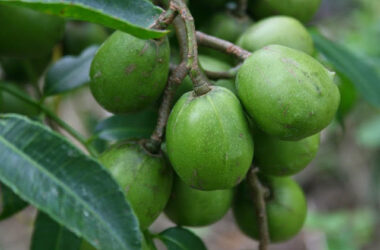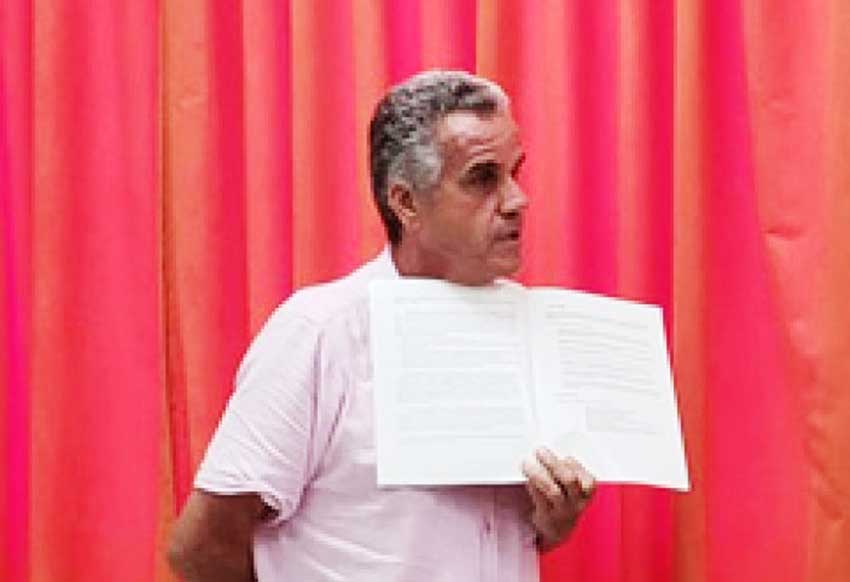
It is impossible for one person to capture the totality of the man that was Yves Renard, because of the diversity of roles he played, with exemplary results. His role included that of Father, Husband, Educator, Environmentalist, Advocate, Community Developer and Facilitator, Music Promoter (Jazz and Pan), Promoter of Kwéyòl as the Language of the People, and Mentor. I knew him best as an Environmentalist and therefore I shall restrict this tribute to this role, in which he achieved excellence and in which his achievements will not be easily equalled or surpassed.
Yves’ global view was that people were always to be the centre of development and they always had the greatest veto power to environmental management practices, individually and even more so, when organised. He was also very clear that communities should always participate in the determination of their futures. Long before phrases like giving “a voice to the voiceless” became modern, Yves was already an advocate for such a cause. His philosophy of genuine people participation and empowerment was not only spoken but was exemplified in his actions. His “espoused theories” and “theories in use” (Argyris and Schön (1974), converged at the community level and created unprecedented results and changes. Yves was a Humanitarian in the real sense of the term and he acted as one.
In my personal life, Yves’ influence was demonstrative and transformative. In September 1982, I packed my suitcase and headed to the University of the West Indies at Mona, Jamaica, to pursue a first degree in Geography. Towards the end of my first year of studies, I wrote home trying to find some suitable field experience. At first, I was unsuccessful. It was not until my aunt who was the cook at the Cathedral Presbytery contacted Monsignor Patrick Anthony (Paba), that I first heard the name “Yves”. My second encounter with that name occurred just prior to returning home in May 1983, when I spoke to a friend from Vieux Fort to find out a little about Yves. My friend who had encountered him working in Vieux Fort, described him in words I can still recall today: “Gason!” he said, “the man is tall like you! Gason, he only going around asking about people, plants and animals.” This was my first description of Yves: that of a naturalist interested in people. Since then, I have known and worked with him for some forty years and grew to know him, his first wife and their children.
In that summer of 1983, I was forced to re-examine my primary focus of study when Yves, through the Eastern Caribbean Natural Areas Management Programme (ECNAMP), gave me my first field job: to prepare a qualitative study of the social and economic conditions of the fishing communities of Cacao and Vigé, whose fishers worked in Savannes Bay and lived in the Upper Watershed. From that study came a publication in 1984 titled “The need for integrated rural development: A case study of the Cacao-Vige communities” prepared by Didacus Jules and Giles Romulus and produced by ECNAMP, Vieux Fort, St. Lucia. It was while I was immersed in that community and living with the fishers that I began to realise that a pure scientific approach to environmental issues would never work and that one had to find multi-disciplinary and multi-sectoral approaches. Later as a post-graduate student at the Centre for Resource Management and Environmental Studies (CERMES) at the UWI in Barbados and at York University in Canada, I was sufficiently influenced to design my programmes of study to address complex sustainable development problems using scientific approaches integrated with social science techniques adapted from Paulo Frere, that great Brazilian Educator, and ideas in participatory rural appraisal from Budd Hall from Canada and Robert Chambers from the United Kingdom. That single experience in the hills of Savannes Bay availed to me by Yves, in a profound manner changed the analytical lens through which I examined the world. For this experience, I am indebted to him.
Yves’ major accomplishments are so many over the last 40 years that I knew him, that to deal with them in detail would be too lengthy. Below are the main ones:
In 1980, Yves who had recently co-founded ECNAMP with Allan Putney, a Protected Areas Specialist from the USA, combined his skills with other professionals from the Caribbean Conservation Association (CCA) and Island Resources Foundation (IRF) to prepare natural resource data atlases for almost the entire Caribbean Archipelago. The Saint Lucia ATLAS vividly illustrated the high density of natural and cultural assets along the south-east Coast of Saint Lucia and in other parts of the island, like the Qualibou Caldera. Requiring a site that in many respects was a microcosm of Caribbean Islands for its integrated costal sustainable development experiment, ECNAMP selected the South-East Coast and so began studies in what became the biggest outdoor laboratory for Conservation and Resources Management students in Saint Lucia.
The first publication that came out of this experience is pivotal to the evolution of environmental thought and strategies in Saint Lucia. The document, produced by the Eastern Caribbean Natural Area Management Programme and St. Lucia Government in 1983 was titled “A report on a study of conservation and development requirements for the south-east coast of St. Lucia. ECNAMP/GOSL Project, Castries, St. Lucia.” This report was prepared by Yves Renard working with a number of distinguished Saint Lucians like Gabriel Charles, Robert Devaux, Seton Campbell, Horace Walters, Ausbert d’Auvergne; Kentigern Louis; Gregor Williams and others. It brought to the conservation arena new ideas that have influenced the environmental planning and resource management approach in Saint Lucia and the Caribbean archipelago for the last 40 years. Two main changes introduced had their origins in the socio-technical school of management which, from the 1960s, was promoted by Eric Trist, Fred Emery and later by David Morley and others. These two areas were as follows:
in areas of many resource users or players, covered by several statutes, and managed by numerous organisations, it is necessary to create a “Referent Organisation,” representing the diversity of interests, and where necessary, include multi-sectoral and multi-disciplinary representatives, to work at the” inter-organisational domain.” The result of this theoretical novelty in the 1960s directed in many respects the establishment of the first Multi-Sectoral Committee in Integrated Coastal Development and Resource Management in Saint Lucia. Representatives came from Government Departments, Quasi Government Organisations, Civil Society Organisations, and Resource Users. Today, the first item on the agenda of all new projects in sustainable development in Saint Lucia, is the formation of a referent organisation, for reasons varying from knowledge, expertise and resource-sharing to building consensus for action from project inception and throughout the project cycle; and
in areas of multiple resource users, an inclusive and participatory process was the best approach to increasing the probabilities of a positive outcome and averting unnecessary conflicts. Today this approach is an axiom, but prior to the 1980s, it was the exception.
The aforementioned publication and the experiment on the South-East Coast, introduced Saint Lucia to a new emerging synthesis in conservation, long before the Brundtland Commission Report on Sustainable Development was published in 1987. The result was:
the establishment of the Maria Islands Wildlife Reserve;
the establishment of two marine reserves in Mankoté and Savannes Bay;
the establishment of the Maria Islands Interpretation Centre;
the commencement of tours to Maria Islands; and
the introduction and continued use of strategies in sustainable charcoal production and mangrove management in Saint Lucia’s largest mangrove.
From 1985, Yves also played a lead role in bringing two mangrove ecologists to Saint Lucia, who in collaboration with the Fisheries Department, undertook the first preliminary survey of the mangroves of Saint Lucia which was published as follows: Portecop, J and Benito Espinal, E (1985) The mangroves of Saint Lucia: Preliminary Survey. ECNAMP, Saint Lucia. This body of work was the basis for the declaration of approximately 12 marine reserves and fishing priority areas in the coastal zone of Saint Lucia by the Fisheries Department. Along the South-East Coast, Yves was not only active in the marine zone, but also worked with Gabriel Charles and the Forestry Department to establish the first charcoal production woodlot at St. Urbain in Vieux Fort, as a means of reducing pressure on the Mankoté Mangrove.
Another major acclaim for Yves came from combining his skills with Kaf Smith, a marine biologist, and the officers of the Department of Fisheries, to establish and monitor the first coastal plots of sea moss as a new livelihood option. The work completed on the ecology and cultivation of sea moss was not only pioneering, but led to the establishment of the sea moss industry, which is now a primary livelihood option for fishers and others from Praslin on the east coast to Savannes Bay. Within the last decade, many fishers and others have diversified into Seamoss cultivation and its by-products, with the Praslin Seamoss Farmers having the first solarised processing plant in rural Saint Lucia.
The body of knowledge learned from the South-East coast was transferred to Soufriere and other parts of Saint Lucia where Yves and I (having joined the Saint Lucia National Trust in 1987 as the Projects Coordinator/Planner) collaborated to implement five major projects for Saint Lucia as follows:
a four-year project to develop the first Systems Plan for Protected Areas in Saint Lucia, (Hudson, Renard and Romulus, 1992);
the development of and strengthening of the Soufriere Regional Development Foundation. A project funded by MacArthur Foundation and implemented by the Saint Lucia National Trust;
the first watershed wide multi-sectoral planning process in Saint Lucia called the Soufriere 2000 Retreat, which gave rise to the Soufriere 2000 Report;
the establishment of the Soufriere Marine Management Area, an international award- winning protected area; and
all the requisite planning for the preparation of Saint Lucia’s dossier for the establishment of the Pitons Management Area (PMA), its submission to UNESCO and its designation as a World Heritage Site. Perhaps the most pleasant memory from this experience was our collaboration in preparing the Pitons’ Charter which was ratified by the Cabinet of Ministers, signed by the Governor General of Saint Lucia, Dame Pearlette Louisy on the Soufriere Waterfront in January 2003. This Charter was accepted by the World Heritage Committee as Saint Lucia’s commitment to the long-term sustainable management of the PMA as a World Heritage Site on behalf of humanity.
Yves’ praxis was the genuine type. He not only spoke it; he also practised it; wrote it; and learned in the process. An examination of some of the major environmental publications to come out of Saint Lucia from 1980 to 2015, involved Yves Renard. They included:
Eastern Caribbean Natural Area Management Programme and St. Lucia Government (1983) A report on a study of conservation and development requirements for the south-east coast of St. Lucia. ECNAMP/GOSL Project, Castries, St. Lucia.);
The Country Environmental Profile of Saint Lucia (1991);
A System Plan for Protected Areas (1992);
The First Biodiversity Strategy and Action Plan (2000);
Draft Land Use Policy for Saint Lucia (2016 or 2017); and
The project proposal which gave the “1.5 To Stay Alive” initiative significant resources and the opportunity for the Caribbean Youth Environment Network (CYEN) to work with GEF SGP UNDP in designing and launching one of the most successful climate change education programmes in Saint Lucia, leading to COP-21 in 2015.
Beyond writing and field work, Yves also contributed to training the next generation of Conservation and Resource Management professionals, through the following:
assisting in the establishment of the Centre for Resource Management and Environmental Studies (CERMES) at UWI, Cave Hill, Barbados, with Dr. Euna Moore and Allan Putney. He was a lecturer at CERMES in 1987/8;
the Presidency of PANOS Caribbean (2019); and
the many participatory planning workshops he facilitated from 1980 to 2019 at the community, national, regional and international levels.
Another major contribution to sustainable development within and outside Saint Lucia by Yves, was his involvement in several organisations to bring his unique perspective to their deliberations and to contribute to their development. He achieved that by:
his 5 terms as President of the Caribbean Conservation Association, which was perhaps the first Organisation in the history of the Caribbean, that operated at the wider Caribbean level and brought Governments, Civil Society Organisations, the Private Sector, Students, Academics, and others under one umbrella body, operating out of Barbados;
his service as Executive Director of CANARI (1990-2001), which he transitioned from ECNAMP.
his work with the Saint Lucia National Trust, serving for at least one term on the Council and preparing two strategic plans for the Organisation;
his work with Laborians to form the Laborie Development Foundation and Labowi Promotions and his preparation of the respective strategic plans for both Organisations and their subsequent revisions;
the Caribbean’s representative on IUCNs Council;
his membership of IUCN’s Commission on Protected Areas;
his service as Trustee on the Board of The International Institute for Environment and Development;
his membership of the Advisory Board of the International Institute de l’Energie and de l’Environnment de la Francophonie; and
Another component of the Yves’ praxis was to undertake consultancies. His work as a Consultant took him to the Bahamas, Botswana, Grenada, Guinea-Bissau, Mauritania, Rwanda and Seychelles, among many others. His international footprint was significant.
In conclusion, let me share a few thoughts about the way Yves should be remembered as an Environmentalist. Here they are:
If Gabriel Charles and Robert Devaux are the Father and Godfather of Conservation in Saint Lucia respectively, Yves will have to be placed up there with them as one of the pioneers of Sustainable Development in Saint Lucia, which helped to give Saint Lucia the excellence label in that arena;
He promoted, practised and codified participatory and integrated sustainable development processes in Saint Lucia; which was replicated in many other countries;
He identified and promoted the significance of culture in sustainable development;
He had a more inductive approach to generating knowledge, because of his participatory approach to sustainable development. He however, understood the value of a deductive approach;
His giving was dependable, consistent, assured, from which his strength and benediction emanated;
He was an empowering mentor who gave of his time willingly;
His desire to mentor the youth in the right direction was constant; and
He was a simple man of immense credibility and his humility endeared him to many. The Quiet Pioneer!
With conviction, I can refer to Yves as one of the kindest, giving, trustworthy, empathetic, creative and neighbourly professional I have ever worked with. We may be poorer for his absence, but richer for the history and legacy he left us.
Rest in peace, my friend, and may the angels take you to Heaven to be with the Father.


